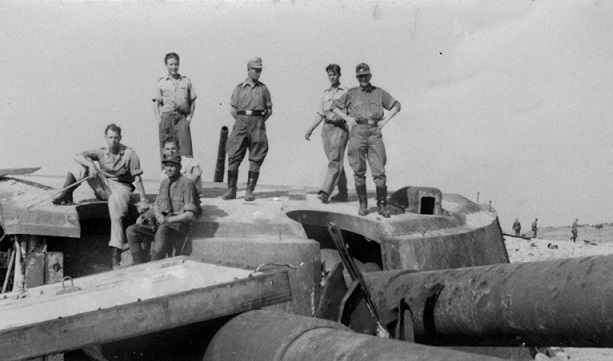
Another 27/02/20 Third assault on Sevastopol: how Hitler managed to take the city of Russian sailors
the defense of Sevastopol – one of the most heroic and tragic pages of history of great Patriotic war. It lasted more than eight months.
General policy conditions
In mid-October 1941 German and Romanian troops were stationed at the Crimean isthmus. Hitler put the commander of the 11th German army, General of infantry E. Manstein, under whom were United all forces assigned to the capture of the Crimea, the task as soon as possible to seize the Peninsula and transfer his army across the Kerch Strait to the Kuban.
the Soviet side, the defense held the 51st separate army under the command of Colonel General F. I. Kuznetsov and evacuated from Odessa independent coastal army under the command of major-General I. E. Petrov. Directly the isthmus was defended by the 51st army.
Manstein argued that the superiority of the Soviet troops over the German was a double: 12 divisions against six. Contemporary Russian historians acknowledged that the Soviet troops, after arrival in the Crimea of the black sea army, was even greater: 16 divisions. However, these data do not reflect the exact number of troops, as the Soviet troops, especially evacuated from Odessa, has experienced a significant shortage.
As shown the capture of the Crimea by the red army in the autumn of 1920, the Crimean isthmuses are not comfortable defensive position. They were easy to get around on the flanks. In addition, under the domination of the Luftwaffe in the air, their defense was still vulnerable.
the Fortified area of Sevastopol, where Soviet troops could rely on the support of the powerful black sea fleet, was a more conditions for a successful defense. This has been proven another example of the protection of the city in the Crimean war. However, in the condition in which superiority at sea could easily be neutralized by control of the air, and it belonged to the Luftwaffe.
in addition, as shown by the same experience of the Crimean war defense of Sevastopol may only last as long as the enemy besieging the city, facing the army on the external front, although even in this case, the city sooner or later doomed to fall, unless there’s a total turning point in the war. In 1854-1855 the enemy was forced to repel the threat posed by Menshikov’s army, to operate in the Crimea, and in the location of the army left forces left Sevastopol.
In 1941-1942 there was a similar situation when the New year of 1942, Soviet troops landed on the Kerch Peninsula and captured the major foothold. They kept it until may 1942, but the loss of Sevastopol was completely surrounded and was doomed. As a springboard for independent occurrence of Sevastopol was unsuitable.
the First and second assaults
on 18 October 1941 German and Romanian troops attacked the 51st Soviet army defending the entrances to the Crimea through Isanski isthmus and Chongar bridge. The numerical superiority of the Soviet troops were led to believe that the attack of the enemy will be repulsed. There was a time when it seemed that a decisive success in the defense is achieved. However, on October 27-28, the Soviet defense still could not withstand.
Broken 51st army retreated on the Kerch Peninsula and soon evacuated. Coastal army took up positions around Sevastopol. Only the commander of the Sevastopol defense area (GRA), formed November 4, was the commander of the black sea fleet, Vice-Admiral F. S. Oktyabrsky. Usually the first date is considered the defense of Sevastopol 30 October 1941, when the enemy was still to the North from Simferopol.
the Germans were not going to take the city immediately. Waiting for the approach of the main forces, November 11, 1941, they commenced the first assault of Sevastopol. Major strikes in the South, in the direction of Balaklava, and in the middle, Cherkez-Kermen and Mackenzie. After a decade of intense fighting the first German-Romanian offensive on Sevastopol shave olepolos.
the command of the enemy on 17 December made a second attack on the city. This time the main blow was delivered in the North. For two weeks the Germans overcame two thirds of the distance separating them from the Northern Bay. The size of the Sevastopol bridgehead decreased by almost half. The town appeared before the fall.
this time Sebastopol was saved. 26 Dec 1941 began the Kerch-Feodosia landing operation of Soviet troops. For a week the Red army occupied in the East of the Crimea is an important strategic bridgehead. To combat troops Manstein was forced to shift most of its forces. He believed that only the sluggishness of the Soviet command sought to capture and consolidation of the bridgehead, not the rapid promotion, helped by his 11-th army to avoid total defeat.
the Fall of Sevastopol
In may 1942, Manstein defeated the Soviet troops on the Kerch Peninsula, and then began the operation “sturgeon Fishing”, the last assault of Sevastopol. It has been prepared very carefully. For the destruction of the Soviet fortifications arrived specially designed sverkhglubokaya (807 mm) artillery gun “Dora”.
on 7 June, the attack began. Major strikes in two directions – from the North and from the South. 11th army Manstein by this time consisted of 12 divisions and 3 brigades, that there have been deliberate advantage over the defender and in manpower. Continuous blows of the Luftwaffe forced the black sea fleet ships soon left the Sevastopol Bay and move to Novorossiysk. Only a few destroyers broke back, delivering ammunition, but it is often killed. Sevastopol has lost the support of the black sea fleet.
on 30 June, the Germans took Malakhov Kurgan is a dominant height. On the same day, Stavka ordered the commander of COP October to leave the city. The order for abandonment was only the high command and the party composition. On the night of July 1, about 600 people this composition was secretly defending evacuated from Sevastopol on submarines. General Petrov wanted to shoot, considering the flight of shame, but was deterred from this by his colleagues.
the city was still about 5,500 combat ready troops and 15 thousand wounded with medical staff. They had to evacuate was not going to the order to surrender them, too, no one gave. Another week, Soviet troops, abandoned his command to their fate, died under enemy bombing and shelling in Sebastopol and Cape Chersonese.
the Enemy officially reported the capture of 100 thousand prisoners, although Manstein calls more conservative figure of 30 thousand prisoners. This means that the vast majority of the defenders of Sevastopol fell death of the brave.
Yaroslav Butakov
Source:
© Russian Seven
Featured articles Share: Comments Comments on the article “the Third assault on Sevastopol: how Hitler managed to take the city of Russian sailors” Please log in to leave a comment! br>
Share on Tumblr
















